
Modern bust of Lucan in Córdoba. There are no ancient likenesses.
On this day in 65 AD, Roman poet Lucan died by suicide by opening a vein at the age of 25, but not before incriminating his mother, among others, in the conspiracy of Gaius Calpurnius Piso against Nero, in the hopes of a pardon. According to Tacitus, as Lucan bled to death, “(he) recalled some poetry he had composed in which he had told the story of a wounded soldier dying a similar kind of death and he recited the very lines. These were his last words.” An alternative interpretation of events is that his death was not by suicide, but was an execution carried out at Nero’s command. Born Marcus Annaeus Lucanus on 3 November 39 AD in Corduba (modern-day Córdoba), in Hispania Baetica. He is regarded as one of the outstanding figures of the Imperial Latin period, known in particular for his epic Pharsalia. His youth and speed of composition set him apart from other poets.
Pharsalia
Aut nihil est sensus animis a morte relictum
aut mors ipsa nihil.
- Either no feeling remains to the soul after death, or death itself matters not at all.
- Book III, line 39
Vita brevis nulli superest qui tempus in illa
quaerendae sibi mortis habet.
- No life is short that gives a man time to slay himself.
- Book IV, line 478
Libera fortunae mors est; capit omnia tellus
quae genuit; caelo tegitur qui non habet urnam.
- The dead are free from Fortune; Mother Earth has room for all her children, and he who lacks an urn has the sky to cover him.
- Book VII, line 818
Scire mori sors prima viris, sed proxima cogi.
- Best gift of all
The knowledge how to die; next, death compelled.
- Book IX, line 211
 On this day in 1883, painter Édouard Manet died from complications of syphilis in Paris at the age of 51. Born in Paris on 23 January 1832, in his families ancestral hôtel particulier on the rue Bonaparte. Manet was one of the first 19th-century artists to paint modern life, and, in my opinion, a pivotal figure in the transition from Realism to Impressionism. His early masterworks, The Luncheon on the Grass (Le déjeuner sur l’herbe) (see below right) and Olympia, (see below left) both 1863, caused great controversy and served as rallying points for the young painters who would create Impressionism. Today, these are considered watershed paintings that mark the genesis of modern art. After the death of his father in 1862, Manet married Suzanne
On this day in 1883, painter Édouard Manet died from complications of syphilis in Paris at the age of 51. Born in Paris on 23 January 1832, in his families ancestral hôtel particulier on the rue Bonaparte. Manet was one of the first 19th-century artists to paint modern life, and, in my opinion, a pivotal figure in the transition from Realism to Impressionism. His early masterworks, The Luncheon on the Grass (Le déjeuner sur l’herbe) (see below right) and Olympia, (see below left) both 1863, caused great controversy and served as rallying points for the young painters who would create Impressionism. Today, these are considered watershed paintings that mark the genesis of modern art. After the death of his father in 1862, Manet married Suzanne  Leenhoff in 1863. Leenhoff was a Dutch-born piano teacher of Manet’s age with whom he had been romantically involved for approximately ten years. Leenhoff initially had been employed by Manet’s father, Auguste, to teach Manet and his younger brother piano. She also may have been Auguste’s mistress. In 1852, Leenhoff gave birth, out of wedlock, to a son, Leon Koella Leenhoff. Eleven-year-old Leon Leenhoff,
Leenhoff in 1863. Leenhoff was a Dutch-born piano teacher of Manet’s age with whom he had been romantically involved for approximately ten years. Leenhoff initially had been employed by Manet’s father, Auguste, to teach Manet and his younger brother piano. She also may have been Auguste’s mistress. In 1852, Leenhoff gave birth, out of wedlock, to a son, Leon Koella Leenhoff. Eleven-year-old Leon Leenhoff,  whose father may have been either of the Manets, posed often for Manet, most famously, as the subject of the Boy Carrying a Sword of 1861 (Metropolitan Museum of Art, New York). He also appears as the boy carrying a tray in the background of The Balcony. Manet painted his wife in The Reading, among other paintings.
whose father may have been either of the Manets, posed often for Manet, most famously, as the subject of the Boy Carrying a Sword of 1861 (Metropolitan Museum of Art, New York). He also appears as the boy carrying a tray in the background of The Balcony. Manet painted his wife in The Reading, among other paintings.
 The Final Footprint – Manet is buried in Passy Cemetery in the 16th arrondissement of Paris. Opened in 1820 in the expensive residential and commercial districts of the Right Bank near the Champs-Élysées, by 1874 the small Passy Cemetery had become the aristocratic necropolis of Paris. Sheltered by a bower of chestnut trees, the cemetery is in the shadow of the Eiffel Tower. The retaining wall of the cemetery is adorned with a bas relief (by Louis Janthial) commemorating the soldiers who fell in the Great War. Other notable final footprints as Passy include; Claude Debussy, Gabriel Fauré, Hubert de Givenchy, Octave Mirbeau, and Berthe Morisot.
The Final Footprint – Manet is buried in Passy Cemetery in the 16th arrondissement of Paris. Opened in 1820 in the expensive residential and commercial districts of the Right Bank near the Champs-Élysées, by 1874 the small Passy Cemetery had become the aristocratic necropolis of Paris. Sheltered by a bower of chestnut trees, the cemetery is in the shadow of the Eiffel Tower. The retaining wall of the cemetery is adorned with a bas relief (by Louis Janthial) commemorating the soldiers who fell in the Great War. Other notable final footprints as Passy include; Claude Debussy, Gabriel Fauré, Hubert de Givenchy, Octave Mirbeau, and Berthe Morisot.
Gallery
-
-
The Spanish Singer, Metropolitan Museum of Art, 1860
-
 The Old Musician
The Old Musician, National Gallery of Art, 1862
-
Mlle. Victorine in the Costume of a Matador, Metropolitan Museum of Art, 1862
-
The Dead Christ with Angels, 1864
-
Battle of the Kearsarge and the Alabama, Philadelphia Museum of Art, 1864. Inspired by the Battle of Cherbourg (1864)
-
 Dead Matador,
Dead Matador, National Gallery of Art, 1864–1865
-
The Philosopher, (Beggar with Oysters), Art Institute of Chicago, 1864–1867
-
The Ragpicker, Norton Simon Museum, 1865-1870
-
Young Flautist, or The Fifer, Musée d’Orsay, 1866
-
Still Life with Melon and Peaches, National Gallery of Art, 1866
-
The Tragic Actor (Rouvière as Hamlet), National Gallery of Art, 1866
-
Woman with Parrot, Metropolitan Museum of Art, 1866
-
Portrait of Madame Brunet, J. Paul Getty Museum, 1867
-
Execution of Emperor Maximilian, 1868
-
Portrait of Émile Zola, Musée d’Orsay, 1868
-
Breakfast in the Studio (the Black Jacket), New Pinakothek, Munich, Germany, 1868
-
The Balcony, Musée d’Orsay, 1868–1869
-
Boating, Metropolitan Museum of Art, 1874
-
The grand canal of Venice (Blue Venice), Shelburne Museum, 1875
-
Madame Manet, Norton Simon Museum, 1874-1876
-
Portrait of Stéphane Mallarmé, Musée d’Orsay, 1876
-
The Rue Mosnier with Flags, J. Paul Getty Museum, 1878
-
In the Conservatory, National Gallery, Berlin, Germany, 1879
-
Chez le père Lathuille, 1879, Musée des Beaux-Arts Tournai
-
The Bugler, 1882, Dallas Museum of Art
-
House in Rueil, National Gallery of Victoria, Melbourne, Australia 1882
-
Garden Path in Rueil, Musée des Beaux-Arts de Dijon, 1882
-
Flowers in a Crystal Vase, National Gallery of Art, 1882
#RIP #OTD in 1926 civil aviator, the first African-American woman and first Native American to hold a pilot license, Queen Bess, Brave Bessie, Bessie Coleman died in a plane crash in Jacksonville, Florida, aged 34. Lincoln Cemetery, Cook County, Illinois
 On this day in 1970 actress Inger Stevens died from a drug related overdose in Hollywood at the age of 35. Born Ingrid Stensland on October 18, 1934 in Stockholm.
On this day in 1970 actress Inger Stevens died from a drug related overdose in Hollywood at the age of 35. Born Ingrid Stensland on October 18, 1934 in Stockholm.
When she was nine, her mother abandoned the family and her father moved to the United States, leaving Inger and her sister in the custody first of the family maid and then with an aunt in Lidingö, near Stockholm. In 1944, the girls moved with their father and his new wife to New York City, where he had found work teaching at Columbia University. At age 13, she and her father moved to Manhattan, Kansas, where she attended Manhattan High School. At 16, she ran away from home to Kansas City, Missouri, and worked in burlesque shows. At 18, she left Kansas to return to New York City, where she worked as a chorus girl and in the Garment District while taking classes at the Actors Studio.

Stevens appeared in several films: A Guide for the Married Man (1967), with Walter Matthau; Hang ‘Em High, with Clint Eastwood; 5 Card Stud, with Dean Martin and Robert Mitchum; and Madigan with Henry Fonda and Richard Widmark.
Her first husband was her agent, Anthony Soglio, to whom she was married from 1955 to 1957.
After her death, actor Ike Jones claimed that he had been secretly married to Stevens since 1961. Some doubted this due to the lack of a marriage license, the maintaining of separate homes and the filing of tax documents as single people. However, at the time Stevens’ estate was being settled, the actress’s brother, Carl O. Stensland, confirmed in court that his sister had hidden her marriage to Jones “out of fear for her career”, because Jones was black. Los Angeles Superior Court Commissioner A. Edward Nichols ruled in Ike Jones’s favor and made him administrator of her estate. A photo exists of the two attending a banquet together in 1968. Her website also states that the marriage to Jones took place in Tijuana, Mexico.
The Final Footprint
Stevens cremated remains were scattered in the Pacific.
#RIP #OTD in 1974, actress (The Magnificent Ambersons, Mrs. Parkington, Johnny Belinda, Hush…Hush, Sweet Charlotte, Bewitched) Agnes Moorehead died of uterine cancer in Rochester, Minnesota, aged 73. Dayton Memorial Park in Dayton, Ohio
 On this day in 1983, ballet choreographer George Balanchine died, aged 79, in Manhattan from Creutzfeldt–Jakob disease. Born Georgiy Melitonovich Balanchivadze on January 22, 1904 in Saint Petersburg, Russian Empire. In my opinion, one of the most influential 20th century choreographers. Styled as the father of American ballet, he co-founded the New York City Ballet and remained its Artistic Director for more than 35 years.
On this day in 1983, ballet choreographer George Balanchine died, aged 79, in Manhattan from Creutzfeldt–Jakob disease. Born Georgiy Melitonovich Balanchivadze on January 22, 1904 in Saint Petersburg, Russian Empire. In my opinion, one of the most influential 20th century choreographers. Styled as the father of American ballet, he co-founded the New York City Ballet and remained its Artistic Director for more than 35 years.
Balanchine took the standards and technique from his time at the Imperial Ballet School and fused it with other schools of movement that he had adopted during his tenure on Broadway and in Hollywood, creating his signature “neoclassical style”.
He was a choreographer known for his musicality; he expressed music with dance and worked extensively with leading composers of his time like Igor Stravinsky. Balanchine was invited to America in 1933 by a young arts patron named Lincoln Kirstein, and together they founded the School of American Ballet. Along with Kirstein, Balanchine also co-founded the New York City Ballet (NYCB).
In 1923, Balanchine married Tamara Geva, a sixteen-year-old dancer. After his divorce from Geva, Balanchine was partnered with Alexandra Danilova from 1926 through 1933. He married and divorced three more times, all to women who were his dancers: Vera Zorina (1938–1946), Maria Tallchief (1946–1952), and Tanaquil LeClercq (1952–1969). He had no children by any of his marriages and no known offspring from any extramarital unions or other liaisons.

The Final Footprint
The night of his death, the company went on with its scheduled performance, which included Divertimento No. 15 and Symphony in C at Lincoln Center.
He had a Russian Orthodox funeral, and was interred at the Oakland Cemetery at Sag Harbor, Suffolk County, New York at the same cemetery where Danilova was later interred.
 On this day in 1983, blues musician, The Father of Chicago Blues, Muddy Waters died in his sleep from heart failure at his home in Westmont, Illinois at the age of 70. Born McKinley Morganfield on April 4, 1913 in Issaquena County, Mississippi.
On this day in 1983, blues musician, The Father of Chicago Blues, Muddy Waters died in his sleep from heart failure at his home in Westmont, Illinois at the age of 70. Born McKinley Morganfield on April 4, 1913 in Issaquena County, Mississippi.
Muddy Waters grew up on Stovall Plantation near Clarksdale, Mississippi, and by age 17 was playing the guitar and the harmonica, emulating the local blues artists Son House and Robert Johnson. He was recorded in Mississippi by Alan Lomax for the Library of Congress in 1941. In 1943, he moved to Chicago to become a full-time professional musician. In 1946, he recorded his first records for Columbia Records and then for Aristocrat Records, a newly formed label run by the brothers Leonard and Phil Chess.
In the early 1950s, Muddy Waters and his band—Little Walter Jacobs on harmonica, Jimmy Rogers on guitar, Elgin Evans on drums and Otis Spann on piano—recorded several blues classics, some with the bassist and songwriter Willie Dixon. These songs included “Hoochie Coochie Man”, “I Just Want to Make Love to You” and “I’m Ready”. In 1958, he traveled to England, laying the foundations of the resurgence of interest in the blues there. His performance at the Newport Jazz Festival in 1960 was recorded and released as his first live album, At Newport 1960.
Muddy Waters’ influence was tremendous, not just on blues and rhythm and blues but on rock and roll, hard rock, folk music, jazz, and country music. His use of amplification is often cited as the link between Delta blues and rock and roll.
Waters’s longtime wife, Geneva (a first cousin of R. L. Burnside), died of cancer on March 15, 1973. Gaining custody of some of his children, he moved them into his home, eventually buying a new house in Westmont, Illinois. Years later, he travelled to Florida and met his future wife, 19-year-old Marva Jean Brooks, whom he nicknamed “Sunshine”. Eric Clapton served as best man at their wedding in 1979.

The Final Footprint
Throngs of blues musicians and fans attended his funeral at Restvale Cemetery in Alsip, Illinois, to pay tribute.
 On this day in 1989, director, producer and screenwriter, Sergio Leone died from a heart attack in Rome at the age of 60. Born on 3 January 1929 in Rome. Best known as the director of three legendary, iconic westerns, often referred to as Spaghetti Westerns: A Fistful of Dollars (Per un pugno di dollari) (1964) with Clint Eastwood; For a Few Dollars More (Per qualche dollaro in più) (1965) with Eastwood and Lee Van Cleef; and The Good, the Bad and the Ugly (Il buono, il brutto, il cattivo) (1966) with Eastwood, Van Cleef and Eli Wallach. The film score for all three movies was composed by Ennio Morricone. Leone also directed Once Upon a Time in the West (C’era una volta il West) (1968) with Henry Fonda, Charles Bronson, Jason Robards and Claudia Cardinale; and Once Upon a Time in America (C’era una volta il America) (1984) with Robert De Niro. All five of these movies are among my very favorites and I will stop what I am doing to watch them.
On this day in 1989, director, producer and screenwriter, Sergio Leone died from a heart attack in Rome at the age of 60. Born on 3 January 1929 in Rome. Best known as the director of three legendary, iconic westerns, often referred to as Spaghetti Westerns: A Fistful of Dollars (Per un pugno di dollari) (1964) with Clint Eastwood; For a Few Dollars More (Per qualche dollaro in più) (1965) with Eastwood and Lee Van Cleef; and The Good, the Bad and the Ugly (Il buono, il brutto, il cattivo) (1966) with Eastwood, Van Cleef and Eli Wallach. The film score for all three movies was composed by Ennio Morricone. Leone also directed Once Upon a Time in the West (C’era una volta il West) (1968) with Henry Fonda, Charles Bronson, Jason Robards and Claudia Cardinale; and Once Upon a Time in America (C’era una volta il America) (1984) with Robert De Niro. All five of these movies are among my very favorites and I will stop what I am doing to watch them.

The Final Footprint – Leone is interred in a private estate in Cimitero di Pratica di Mare in Pratica di Mare, Lazio, Italy.
 On this day in 2019, actor Peter Mayhew died of a heart attack at his home in Boyd, Texas, age 74. Born Peter William Mayhew on May 19, 1944 in Barnes, Surrey, England. Perhaps best known for portraying Chewbacca in the Star Wars film series. He played the character from the 1977 original to 2015’s The Force Awakens before his retirement from the role. His height 7′ 2″, was a product of Marfan syndrome.
On this day in 2019, actor Peter Mayhew died of a heart attack at his home in Boyd, Texas, age 74. Born Peter William Mayhew on May 19, 1944 in Barnes, Surrey, England. Perhaps best known for portraying Chewbacca in the Star Wars film series. He played the character from the 1977 original to 2015’s The Force Awakens before his retirement from the role. His height 7′ 2″, was a product of Marfan syndrome.
Mayhew married Mary Angelique “Angie” Luker (née Cigainero; born October 12, 1954), a native of Texas, on August 7, 1999. The two lived in Boyd, Texas.
He became a naturalised citizen of the United States in 2005 at a ceremony in Arlington, Texas. In an interview with the Fort Worth Star-Telegram he joked that he did not get a medal at this ceremony either, a reference to the closing scene in Star Wars during which Luke Skywalker and Han Solo get medals, but Chewbacca does not. Mayhew noted in an MTV interview that although Chewbacca does not get a medal in the film, he does have the last line of dialogue, when he roars.
The Final Footprint

He was buried in Reno, Parker County, Texas, in Azleland Memorial Park and Mausoleum.
Star Wars: The Rise of Skywalker is dedicated to his memory.
#RIP #OTD in 2022, singer, with her daughter Wynonna The Judds (“Mama He’s Crazy”, “Why Not Me”, “Girls Night Out”, “Love Is Alive”) mother of Ashley, Naomi Judd died from a self-inflicted gunshot wound at her home in Leiper’s Fork, Tennessee, aged 76. Cremated
#RIP #OTD in 2024 guitarist (Peter Gunn, Because They’re Young), songwriter (Rebel-‘Rouser), Duane Eddy died of cancer in Franklin, Tennessee aged 85. Cremated
Have you planned yours yet?
Follow TFF on twitter @RIPTFF
 On this day in 1880, novelist Gustave Flaubert died in Croisset, France of a cerebral hemorrhage at the age of 58. Born on 12 December 1821, in Rouen, in the Seine-Maritime department of Upper Normandy, in northern France. In my opinion, one of the greatest novelists in Western literature. He is known especially for his first published novel, Madame Bovary (1857), for his Correspondence, and for his scrupulous devotion to his style and aesthetics. Flaubert was a notorious perfectionist and claimed always to be searching for le mot juste (“the precise word”). When it was first serialized in La Revue de Paris between 1 October 1856 and 15 December 1856, the novel was attacked for obscenity by public prosecutors. The resulting trial, held in January 1857, made the story notorious. After Flaubert’s acquittal on 7 February 1857, Madame Bovary became a bestseller when it was published as a single volume in April 1857. Flaubert’s masterpiece is now considered a seminal work of realism and one of the most influential novels ever written. From 1846 to 1854, Flaubert had a relationship with the poet Louise Colet; his letters to her survive. Flaubert never married.
On this day in 1880, novelist Gustave Flaubert died in Croisset, France of a cerebral hemorrhage at the age of 58. Born on 12 December 1821, in Rouen, in the Seine-Maritime department of Upper Normandy, in northern France. In my opinion, one of the greatest novelists in Western literature. He is known especially for his first published novel, Madame Bovary (1857), for his Correspondence, and for his scrupulous devotion to his style and aesthetics. Flaubert was a notorious perfectionist and claimed always to be searching for le mot juste (“the precise word”). When it was first serialized in La Revue de Paris between 1 October 1856 and 15 December 1856, the novel was attacked for obscenity by public prosecutors. The resulting trial, held in January 1857, made the story notorious. After Flaubert’s acquittal on 7 February 1857, Madame Bovary became a bestseller when it was published as a single volume in April 1857. Flaubert’s masterpiece is now considered a seminal work of realism and one of the most influential novels ever written. From 1846 to 1854, Flaubert had a relationship with the poet Louise Colet; his letters to her survive. Flaubert never married.
 On this day in 1903, leading Post-Impressionist artist, Paul Gauguin died of syphilis in Atuona, Hiva ‘Oa, Marquesas Islands, French Polynesia at the age of 54. Born Eugène Henri Paul Gauguin on 7 June 1848 in Paris. In my opinion, one of the most influential artists to ever live. He married a Danish woman, Mette-Sophie Gad. Gauguin was friends with Vincent van Gogh, with whom in 1888 he spent nine weeks painting in Arles. He was also friends with Camille Pissarro and Paul Cézanne and painted with each of them. He made several attempts to find a tropical paradise where he could ‘live on fish and fruit’ and paint in his increasingly primitive style and frolic with the nubile native girls (see the gallery below). His travels took him to Martinique, the Panama Canal, Tahiti and the Marquesas Islands.
On this day in 1903, leading Post-Impressionist artist, Paul Gauguin died of syphilis in Atuona, Hiva ‘Oa, Marquesas Islands, French Polynesia at the age of 54. Born Eugène Henri Paul Gauguin on 7 June 1848 in Paris. In my opinion, one of the most influential artists to ever live. He married a Danish woman, Mette-Sophie Gad. Gauguin was friends with Vincent van Gogh, with whom in 1888 he spent nine weeks painting in Arles. He was also friends with Camille Pissarro and Paul Cézanne and painted with each of them. He made several attempts to find a tropical paradise where he could ‘live on fish and fruit’ and paint in his increasingly primitive style and frolic with the nubile native girls (see the gallery below). His travels took him to Martinique, the Panama Canal, Tahiti and the Marquesas Islands. The Final Footprint – Gauguin is interred in Calvary Cemetery (Cimetière Calvaire), Atuona, Hiva ‘Oa, Marquesas Islands, French Polynesia. Gauguin’s life inspired W. Somerset Maugham’s novel The Moon and Sixpence. Mario Vargas Llosa based his 2003 novel The Way to Paradise on Gauguin’s life. Gauguin is also the subject of at least two operas: Federico Elizalde‘s Paul Gauguin (1943); and Gauguin (a synthetic life) by Michael Smetanin and Alison Croggon. Déodat de Séverac wrote his Elegy for piano in memory of Gauguin.
The Final Footprint – Gauguin is interred in Calvary Cemetery (Cimetière Calvaire), Atuona, Hiva ‘Oa, Marquesas Islands, French Polynesia. Gauguin’s life inspired W. Somerset Maugham’s novel The Moon and Sixpence. Mario Vargas Llosa based his 2003 novel The Way to Paradise on Gauguin’s life. Gauguin is also the subject of at least two operas: Federico Elizalde‘s Paul Gauguin (1943); and Gauguin (a synthetic life) by Michael Smetanin and Alison Croggon. Déodat de Séverac wrote his Elegy for piano in memory of Gauguin.
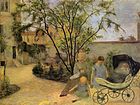




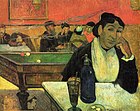

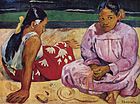








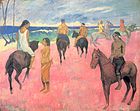




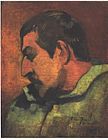

 On this day in 2009, journalist, sportswriter, novelist, biographer and screenwriter, Bud Shrake died at St. David’s Hospital in Austin, of complications from lung cancer at the age of 77. Born Edwin A. Shrake, Jr. in Fort Worth on 6 September 1931. Shrake co-wrote a series of golfing advice books with legendary golf coach Harvey Penick, including Harvey Penick’s Little Red Book, a golf guide that became the best-selling sports book in publishing history. Called a “lion of Texas letters” by the Austin American-Statesman, Shrake was a member of the Texas Film Hall of Fame, and received the Lon Tinkle lifetime achievement award from the Texas Institute of Letters and the Texas Book Festival Bookend Award. Shrake married twice and was Texas Governor Ann Richards’ companion for 17 years, until her death in 2006. As the “first gentleman of Texas,” he escorted Richards to her inaugural ball and to other social events, and organized card games inside the Texas governor’s mansion. Shrake was raised in Fort Worth’s Travis Avenue Baptist Church, but that did not stop him from obtaining ordination by the Universal Life Church and officiating at the wedding of friends such as writer Gary Cartwright.
On this day in 2009, journalist, sportswriter, novelist, biographer and screenwriter, Bud Shrake died at St. David’s Hospital in Austin, of complications from lung cancer at the age of 77. Born Edwin A. Shrake, Jr. in Fort Worth on 6 September 1931. Shrake co-wrote a series of golfing advice books with legendary golf coach Harvey Penick, including Harvey Penick’s Little Red Book, a golf guide that became the best-selling sports book in publishing history. Called a “lion of Texas letters” by the Austin American-Statesman, Shrake was a member of the Texas Film Hall of Fame, and received the Lon Tinkle lifetime achievement award from the Texas Institute of Letters and the Texas Book Festival Bookend Award. Shrake married twice and was Texas Governor Ann Richards’ companion for 17 years, until her death in 2006. As the “first gentleman of Texas,” he escorted Richards to her inaugural ball and to other social events, and organized card games inside the Texas governor’s mansion. Shrake was raised in Fort Worth’s Travis Avenue Baptist Church, but that did not stop him from obtaining ordination by the Universal Life Church and officiating at the wedding of friends such as writer Gary Cartwright. The Final Footprint – The staff at the Austin Country Club lowered its club flag to half staff in recognition of Shrake’s death. At Shrake’s funeral, Ray Benson sang Willie Nelson‘s “I Still Can’t Believe You’re Gone” while Nelson sang “Angel Flying Too Close to the Ground”. Cartwright called Shrake “my friend, compadre and mentor for 50 years. Every success I enjoyed owed directly or indirectly to Bud Shrake.” At the graveside service, Jerry Jeff Walker played two songs: Charles John Quarto and Shake Russell‘s “Dare of an Angel” and the Walter Donaldson and Gus Kahn standard “My Buddy.” Shrake’s hearse bore the Mad Dog Productions sign in the back window.Shrake is interred next to Richards in the Texas State Cemetery. Other notable final footprints at Texas State Cemetery include; Stephen F. Austin, John B. Connally, Nellie Connally, J. Frank Dobie, Barbara Jordan, Tom Landry (cenotaph), James A. Michener (cenotaph), Ann Richards, Big Foot Wallace, and Walter Prescott Webb.
The Final Footprint – The staff at the Austin Country Club lowered its club flag to half staff in recognition of Shrake’s death. At Shrake’s funeral, Ray Benson sang Willie Nelson‘s “I Still Can’t Believe You’re Gone” while Nelson sang “Angel Flying Too Close to the Ground”. Cartwright called Shrake “my friend, compadre and mentor for 50 years. Every success I enjoyed owed directly or indirectly to Bud Shrake.” At the graveside service, Jerry Jeff Walker played two songs: Charles John Quarto and Shake Russell‘s “Dare of an Angel” and the Walter Donaldson and Gus Kahn standard “My Buddy.” Shrake’s hearse bore the Mad Dog Productions sign in the back window.Shrake is interred next to Richards in the Texas State Cemetery. Other notable final footprints at Texas State Cemetery include; Stephen F. Austin, John B. Connally, Nellie Connally, J. Frank Dobie, Barbara Jordan, Tom Landry (cenotaph), James A. Michener (cenotaph), Ann Richards, Big Foot Wallace, and Walter Prescott Webb.
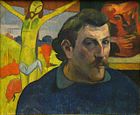

 On this day in 1825,
On this day in 1825,  The Final Footprint
The Final Footprint On this day in 2002 Thoroughbred race horse who won the United States Triple Crown of Thoroughbred Racing in 1977, Seattle Slew died in his sleep at Hill ‘N’ Dale Farm, Lexington, Kentucky, 25 years to the day he won the Kentucky Derby, at the age of 28. Foaled on 15 February 1974 at Ben Castleman’s White Horse Acres Farm near Lexington, Kentucky. A descendant of the great sire Nearco through his son, Nasrullah, Seattle Slew was sired by Bold Reasoning and out of My Charmer. He was named Champion 2-Year-Old of 1976. The big nearly-black colt swept through the Triple Crown races and was named Champion 3-Year-Old of 1977 and Eclipse Award American Horse of the Year. Seattle Slew is the only Belmont Stakes winner to sire a Belmont Stakes winner, A.P. Indy (whose damsire was the great Secretariat), who in turn sired Belmont Stakes winner, Rags to Riches.
On this day in 2002 Thoroughbred race horse who won the United States Triple Crown of Thoroughbred Racing in 1977, Seattle Slew died in his sleep at Hill ‘N’ Dale Farm, Lexington, Kentucky, 25 years to the day he won the Kentucky Derby, at the age of 28. Foaled on 15 February 1974 at Ben Castleman’s White Horse Acres Farm near Lexington, Kentucky. A descendant of the great sire Nearco through his son, Nasrullah, Seattle Slew was sired by Bold Reasoning and out of My Charmer. He was named Champion 2-Year-Old of 1976. The big nearly-black colt swept through the Triple Crown races and was named Champion 3-Year-Old of 1977 and Eclipse Award American Horse of the Year. Seattle Slew is the only Belmont Stakes winner to sire a Belmont Stakes winner, A.P. Indy (whose damsire was the great Secretariat), who in turn sired Belmont Stakes winner, Rags to Riches.
 The Final Footprint – Seattle Slew was buried whole, the highest honor for a race horse, in the courtyard at Hill ‘N’ Dale Farm with his favorite blanket and a bag of peppermints which he liked to eat. Three Chimneys Farm, Midway, Kentucky erected a statue of Seattle Slew near the stallion barn in his honor.
The Final Footprint – Seattle Slew was buried whole, the highest honor for a race horse, in the courtyard at Hill ‘N’ Dale Farm with his favorite blanket and a bag of peppermints which he liked to eat. Three Chimneys Farm, Midway, Kentucky erected a statue of Seattle Slew near the stallion barn in his honor. On this day in 1862, author, poet, philosopher, abolitionist, naturalist, tax resister, development critic, surveyor, historian, and leading transcendentalist, Henry David Thoreau died from complications of tuberculosis at his home in Concord, Massachusetts at the age of 44. Born David Henry Thoreau in Concord on 12 July 1817. Perhaps best known for his book Walden, a reflection upon simple living in natural surroundings, and his essay Resistance to Civil Government (also known as Civil Disobedience), an argument for disobedience to an unjust state. Thoreau’s books, articles, essays, journals, and poetry total over 20 volumes. His literary style interweaves close natural observation, personal experience, pointed rhetoric, symbolic meanings, and historical lore, while displaying a poetic sensibility, philosophical austerity, and “Yankee” love of practical detail. He was also deeply interested in the idea of survival in the face of hostile elements, historical change, and natural decay; at the same time he advocated abandoning waste and illusion in order to discover life’s true essential needs. He was a lifelong abolitionist, delivering lectures that attacked the Fugitive Slave Law while praising the writings of Wendell Phillips and defending abolitionist John Brown.
On this day in 1862, author, poet, philosopher, abolitionist, naturalist, tax resister, development critic, surveyor, historian, and leading transcendentalist, Henry David Thoreau died from complications of tuberculosis at his home in Concord, Massachusetts at the age of 44. Born David Henry Thoreau in Concord on 12 July 1817. Perhaps best known for his book Walden, a reflection upon simple living in natural surroundings, and his essay Resistance to Civil Government (also known as Civil Disobedience), an argument for disobedience to an unjust state. Thoreau’s books, articles, essays, journals, and poetry total over 20 volumes. His literary style interweaves close natural observation, personal experience, pointed rhetoric, symbolic meanings, and historical lore, while displaying a poetic sensibility, philosophical austerity, and “Yankee” love of practical detail. He was also deeply interested in the idea of survival in the face of hostile elements, historical change, and natural decay; at the same time he advocated abandoning waste and illusion in order to discover life’s true essential needs. He was a lifelong abolitionist, delivering lectures that attacked the Fugitive Slave Law while praising the writings of Wendell Phillips and defending abolitionist John Brown. The Final Footprint – Bronson Alcott planned the funeral service and read selections from Thoreau’s works, and Ellery Channing presented a hymn. Ralph Waldo Emerson wrote the eulogy spoken at his funeral. Originally buried in the Dunbar family plot, he and members of his immediate family were eventually moved to Sleepy Hollow Cemetery in Concord. Other notable final footprints at Sleepy Hollow include; Louisa May Alcott, William Ellery Channing, Ralph Waldo Emerson, and Nathaniel Hawthorne.
The Final Footprint – Bronson Alcott planned the funeral service and read selections from Thoreau’s works, and Ellery Channing presented a hymn. Ralph Waldo Emerson wrote the eulogy spoken at his funeral. Originally buried in the Dunbar family plot, he and members of his immediate family were eventually moved to Sleepy Hollow Cemetery in Concord. Other notable final footprints at Sleepy Hollow include; Louisa May Alcott, William Ellery Channing, Ralph Waldo Emerson, and Nathaniel Hawthorne. On this day in 1919, author L. Frank Baum died from a stroke in Hollywood at the age of 62. Born Lyman Frank Baum on 15 May 1856 in Chittenango, New York. Perhaps best known for writing The Wonderful Wizard of Oz. He wrote 55 novels in total including thirteen Oz sequels, and nine other fantasy novels. In his writings, he anticipated television, augmented reality, laptop computers (The Master Key), wireless telephones (Tik-Tok of Oz), women in high risk, action-heavy occupations (Mary Louise in the Country), and the ubiquity of advertising on clothing (Aunt Jane’s Nieces at Work). Baum married Maud Gage (1882 – 1919 his death). They had four children.
On this day in 1919, author L. Frank Baum died from a stroke in Hollywood at the age of 62. Born Lyman Frank Baum on 15 May 1856 in Chittenango, New York. Perhaps best known for writing The Wonderful Wizard of Oz. He wrote 55 novels in total including thirteen Oz sequels, and nine other fantasy novels. In his writings, he anticipated television, augmented reality, laptop computers (The Master Key), wireless telephones (Tik-Tok of Oz), women in high risk, action-heavy occupations (Mary Louise in the Country), and the ubiquity of advertising on clothing (Aunt Jane’s Nieces at Work). Baum married Maud Gage (1882 – 1919 his death). They had four children. The Final Footprint – The day after his stroke, Baum slipped into a coma but briefly awoke and reportedly spoke his last words to his wife, “Now we can cross the Shifting Sands.” He was buried in Forest Lawn Memorial Park, Glendale, California. Following early film treatments in 1910 and 1925 and Baum’s own venture The Oz Film Manufacturing Company, Metro Goldwyn Mayer made the story into the now classic movie The Wizard of Oz (1939), starring Judy Garland as Dorothy Gale. The film was given an all-a-dream ending which differs from the book. A completely new Tony Award-winning Broadway musical with an African-American cast, The Wiz, was staged in 1975 with Stephanie Mills as Dorothy. It was the basis for a 1978 film by the same title starring Diana Ross as an adult Dorothy and Michael Jackson as the Scarecrow. The Wizard of Oz continues to inspire new versions, such as Disney’s Return to Oz (1985), The Muppets’ Wizard of Oz, Tin Man (a re-imagining of the story televised in late 2007 on the Sci Fi Channel), and a variety of animated productions. Today’s most successful Broadway show, Wicked, provides a backstory to the two Oz witches used in the classic MGM film. Gregory Maguire, author of the novel, Wicked, on which the musical is based, chose to honor Baum by naming his main character Elphaba, a phonetic take on Baum’s initials. The film Oz the Great and Powerful (2013) serves as an homage to MGM’s film, and stars James Franco, Mila Kunis, Rachel Weisz, and Michelle Williams. Other notable Final Footprints at Forest Lawn Glendale include; Humphrey Bogart, Lon Chaney, Nat King Cole, Dorothy Dandridge, Sammy Davis, Jr., Jean Harlow, Sam Cooke, Walt Disney, Errol Flynn, Clark Gable, Michael Jackson, Carole Lombard, Tom Mix, Casey Stengel, Jimmy Stewart, Elizabeth Taylor, and Spencer Tracy.
The Final Footprint – The day after his stroke, Baum slipped into a coma but briefly awoke and reportedly spoke his last words to his wife, “Now we can cross the Shifting Sands.” He was buried in Forest Lawn Memorial Park, Glendale, California. Following early film treatments in 1910 and 1925 and Baum’s own venture The Oz Film Manufacturing Company, Metro Goldwyn Mayer made the story into the now classic movie The Wizard of Oz (1939), starring Judy Garland as Dorothy Gale. The film was given an all-a-dream ending which differs from the book. A completely new Tony Award-winning Broadway musical with an African-American cast, The Wiz, was staged in 1975 with Stephanie Mills as Dorothy. It was the basis for a 1978 film by the same title starring Diana Ross as an adult Dorothy and Michael Jackson as the Scarecrow. The Wizard of Oz continues to inspire new versions, such as Disney’s Return to Oz (1985), The Muppets’ Wizard of Oz, Tin Man (a re-imagining of the story televised in late 2007 on the Sci Fi Channel), and a variety of animated productions. Today’s most successful Broadway show, Wicked, provides a backstory to the two Oz witches used in the classic MGM film. Gregory Maguire, author of the novel, Wicked, on which the musical is based, chose to honor Baum by naming his main character Elphaba, a phonetic take on Baum’s initials. The film Oz the Great and Powerful (2013) serves as an homage to MGM’s film, and stars James Franco, Mila Kunis, Rachel Weisz, and Michelle Williams. Other notable Final Footprints at Forest Lawn Glendale include; Humphrey Bogart, Lon Chaney, Nat King Cole, Dorothy Dandridge, Sammy Davis, Jr., Jean Harlow, Sam Cooke, Walt Disney, Errol Flynn, Clark Gable, Michael Jackson, Carole Lombard, Tom Mix, Casey Stengel, Jimmy Stewart, Elizabeth Taylor, and Spencer Tracy. On this day in 1992, Oscar nominated actress and singer, Marlene Dietrich died of renal failure in Paris at the age of 90. Born Maria Magdalene Dietrich on 27 December 1901 in Schöneberg, a district of Berlin, Germany. She appeared in over 70 movies and was known for her glamour and her beauty. She became a U. S. citizen in 1939. Dietrich raised war bonds and performed in USO tours and was awarded the Presidential Medal of Freedom by the US in 1947. She said that this was her proudest accomplishment. She was also awarded the Légion d’honneur by the French government as recognition for her wartime work. Dietrich married once to Rudolf Sieber (1897-1976 his death). Dietrich allegedly had affairs with writer Erich Maria Remarque, Gary Cooper, Yul Brynner, George Bernard Shaw, and John F. Kennedy.
On this day in 1992, Oscar nominated actress and singer, Marlene Dietrich died of renal failure in Paris at the age of 90. Born Maria Magdalene Dietrich on 27 December 1901 in Schöneberg, a district of Berlin, Germany. She appeared in over 70 movies and was known for her glamour and her beauty. She became a U. S. citizen in 1939. Dietrich raised war bonds and performed in USO tours and was awarded the Presidential Medal of Freedom by the US in 1947. She said that this was her proudest accomplishment. She was also awarded the Légion d’honneur by the French government as recognition for her wartime work. Dietrich married once to Rudolf Sieber (1897-1976 his death). Dietrich allegedly had affairs with writer Erich Maria Remarque, Gary Cooper, Yul Brynner, George Bernard Shaw, and John F. Kennedy.

 The Final Footprint – Napoleon was initially entombed on St. Helena in the Valley of the Willows. In 1840, King of the French Louis Philippe I obtained permission from the British to return Napoleon’s remains to France. The remains were transported aboard the frigate Belle-Poule, which had been painted black for the occasion, and on 29 November she arrived in Cherbourg. The remains were transferred to the steamship Normandie, which transported them to Le Havre, up the Seine to Rouen and on to Paris. On 15 December, a state funeral was held. The hearse proceeded from the Arc de Triomphe down the Champs-Élysées, across the Place de la Concorde to the Esplanade des Invalides and then to the cupola in St Jérôme’s Chapel, where it stayed until the tomb designed by Louis Visconti was completed. In 1861, Napoleon’s remains were entombed in a porphyry sarcophagus in the crypt under the dome at Les Invalides, the burial sight for some of France’s war heroes including a memorial to Antoine de Saint-Exupéry.
The Final Footprint – Napoleon was initially entombed on St. Helena in the Valley of the Willows. In 1840, King of the French Louis Philippe I obtained permission from the British to return Napoleon’s remains to France. The remains were transported aboard the frigate Belle-Poule, which had been painted black for the occasion, and on 29 November she arrived in Cherbourg. The remains were transferred to the steamship Normandie, which transported them to Le Havre, up the Seine to Rouen and on to Paris. On 15 December, a state funeral was held. The hearse proceeded from the Arc de Triomphe down the Champs-Élysées, across the Place de la Concorde to the Esplanade des Invalides and then to the cupola in St Jérôme’s Chapel, where it stayed until the tomb designed by Louis Visconti was completed. In 1861, Napoleon’s remains were entombed in a porphyry sarcophagus in the crypt under the dome at Les Invalides, the burial sight for some of France’s war heroes including a memorial to Antoine de Saint-Exupéry.
 The Final Footprint
The Final Footprint In 1990, twenty years after the shootings, a memorial commemorating the events of May 4 was dedicated on the campus on a 2.5-acre (1.0 ha) site overlooking the University’s Commons where the student protest took place. Even the construction of the monument became controversial and, in the end, only 7% of the design was constructed. The memorial does not contain the names of those killed or wounded in the shooting; under pressure, the university agreed to install a plaque near it with the names.
In 1990, twenty years after the shootings, a memorial commemorating the events of May 4 was dedicated on the campus on a 2.5-acre (1.0 ha) site overlooking the University’s Commons where the student protest took place. Even the construction of the monument became controversial and, in the end, only 7% of the design was constructed. The memorial does not contain the names of those killed or wounded in the shooting; under pressure, the university agreed to install a plaque near it with the names. On this day in 1975, actor and comedian and Stooge, Moe Howard died of lung cancer in Los Angeles, California just shy of his 78th birthday. Born Moses Harry Horwitz on 19 June 1897 in the Brownsville neighborhood of Brooklyn. The leader of The Three Stooges, the classic comedy team who stared in motion pictures and television for four decades. The original line up included Moe and his brother Shemp and Larry Fine. When Shemp left in 1932 he was replaced by another brother, Jerome who took the stage name, Curly. Shemp returned when Curly suffered a stroke in 1946. On 22 November 1955, Shemp died of a heart attack and was replaced by Joe Besser. Besser was eventually replaced by Joe DeRita who took the name Curly-Joe. Moe was married to Helen Schonberger (1925-1975 his death). He apparently was very romantic and wrote his wife hundreds of love poems. My kinda guy! The Three Stooges humour spans generations. One of my sons is a fan.
On this day in 1975, actor and comedian and Stooge, Moe Howard died of lung cancer in Los Angeles, California just shy of his 78th birthday. Born Moses Harry Horwitz on 19 June 1897 in the Brownsville neighborhood of Brooklyn. The leader of The Three Stooges, the classic comedy team who stared in motion pictures and television for four decades. The original line up included Moe and his brother Shemp and Larry Fine. When Shemp left in 1932 he was replaced by another brother, Jerome who took the stage name, Curly. Shemp returned when Curly suffered a stroke in 1946. On 22 November 1955, Shemp died of a heart attack and was replaced by Joe Besser. Besser was eventually replaced by Joe DeRita who took the name Curly-Joe. Moe was married to Helen Schonberger (1925-1975 his death). He apparently was very romantic and wrote his wife hundreds of love poems. My kinda guy! The Three Stooges humour spans generations. One of my sons is a fan.

 On this day in 1984, actress and singer Diana Dors died from ovarian cancer in Windsor, Berkshire, England at the age of 52. Born Diana Mary Fluck on 23 October 1931 in Swindon, Wiltshire, England. She first came to public notice as a blonde bombshell in the style of American Marilyn Monroe, as promoted by her first husband, Dennis Hamilton, mostly via sex film-comedies and risqué modelling. After it turned out that Hamilton had been defrauding her, she continued to play up to her established image, and she made tabloid headlines with the parties reportedly held at her house. Later, she showed a genuine talent for TV, recordings, and cabaret, and gained new popularity as a regular chat-show guest.
On this day in 1984, actress and singer Diana Dors died from ovarian cancer in Windsor, Berkshire, England at the age of 52. Born Diana Mary Fluck on 23 October 1931 in Swindon, Wiltshire, England. She first came to public notice as a blonde bombshell in the style of American Marilyn Monroe, as promoted by her first husband, Dennis Hamilton, mostly via sex film-comedies and risqué modelling. After it turned out that Hamilton had been defrauding her, she continued to play up to her established image, and she made tabloid headlines with the parties reportedly held at her house. Later, she showed a genuine talent for TV, recordings, and cabaret, and gained new popularity as a regular chat-show guest. The Final Footprint
The Final Footprint On this day in 1987, singer and actress Dalida, died by suicide by overdosing on barbiturates, in Paris, at the age of 54. She left behind a note which read, “La vie m’est insupportable… Pardonnez-moi.” (“Life has become unbearable for me… Forgive me.”) Born Iolanda Cristina Gigliotti on 17 January 1933 in Cairo, Egypt. Her family was from Serrastretta, Calabria, Italy, but lived in Egypt, where Dalida’s father, Pietro Gigliotti, was first violinist (primo violino) at the Cairo Opera House. Dalida performed and recorded in more than 10 languages including: French, Arabic, Italian, Greek, German, English, Japanese, Hebrew, Dutch and Spanish. She received 55 gold records and was the first singer to receive a diamond record. Renowned for the changes she brought to the French and global music industry with her powerful and colourful performances, she is today still remembered by fans throughout the world. A 30-year career (she debuted in 1956 and recorded her last album in 1986, a few months before her death) and her death led to an iconic image as a tragic diva. My favorite songs sung by Dalida include; “Bambino”, “Gondolier”, “Tu Me Donnes”, and “Parole Parole”.
On this day in 1987, singer and actress Dalida, died by suicide by overdosing on barbiturates, in Paris, at the age of 54. She left behind a note which read, “La vie m’est insupportable… Pardonnez-moi.” (“Life has become unbearable for me… Forgive me.”) Born Iolanda Cristina Gigliotti on 17 January 1933 in Cairo, Egypt. Her family was from Serrastretta, Calabria, Italy, but lived in Egypt, where Dalida’s father, Pietro Gigliotti, was first violinist (primo violino) at the Cairo Opera House. Dalida performed and recorded in more than 10 languages including: French, Arabic, Italian, Greek, German, English, Japanese, Hebrew, Dutch and Spanish. She received 55 gold records and was the first singer to receive a diamond record. Renowned for the changes she brought to the French and global music industry with her powerful and colourful performances, she is today still remembered by fans throughout the world. A 30-year career (she debuted in 1956 and recorded her last album in 1986, a few months before her death) and her death led to an iconic image as a tragic diva. My favorite songs sung by Dalida include; “Bambino”, “Gondolier”, “Tu Me Donnes”, and “Parole Parole”.
 On this day in 2003, model and actress Suzy Parker died at her home in Montecito, California from kidney failure at the age of 70. Born Cecilia Ann Renee Parker on 28 October 1932 in San Antonio, Texas. One of the most recognizable faces of the 1950’s, appearing on many magazine covers, advertisements, and in movies and television series. Parker became the so-called signature face of the Coco Chanel brand. Parker was married three times including; Pierre de la Salle (1958-1961 divorce) and actor Bradford Dillman (1963-2003 her death).
On this day in 2003, model and actress Suzy Parker died at her home in Montecito, California from kidney failure at the age of 70. Born Cecilia Ann Renee Parker on 28 October 1932 in San Antonio, Texas. One of the most recognizable faces of the 1950’s, appearing on many magazine covers, advertisements, and in movies and television series. Parker became the so-called signature face of the Coco Chanel brand. Parker was married three times including; Pierre de la Salle (1958-1961 divorce) and actor Bradford Dillman (1963-2003 her death). The Final Footprint – Parker is interred in Santa Barbara Cemetery, Santa Barbara, California. Her grave is marked by a flat granite marker. Other notable Final Footprints at Santa Barbara include; Laurence Harvey, Fess Parker (no relation) and Kenneth Rexroth.
The Final Footprint – Parker is interred in Santa Barbara Cemetery, Santa Barbara, California. Her grave is marked by a flat granite marker. Other notable Final Footprints at Santa Barbara include; Laurence Harvey, Fess Parker (no relation) and Kenneth Rexroth.
 On this day in 1519, Italian polymath: painter, sculptor, architect, musician, scientist, mathematician, engineer, inventor, anatomist, geologist, cartographer, botanist and writer; Renaissance Man, Leonardo da Vinci died at the manor house Clos Lucé in Amboise, Touraine (in present-day Indre-et-Loire, France), at the age of 67. Born Lionardo di ser Piero da Vincion on 15 April 1452, in the Tuscan hill town of Vinci, in the lower valley of the Arno River in the territory of Florence. One of the most diversely talented people ever to have lived. Perhaps he best known for his paintings, Mona Lisa or La Giocondo, The Last Supper and his drawing Vitruvian Man. Da Vinci apparently had no close relationships with any women and never married. Reportedly in his final days Da Vinci apologized to “God and man for leaving so much undone.” If we all accomplished a fraction of what Da Vinci did the world would be an immeasurable better place.
On this day in 1519, Italian polymath: painter, sculptor, architect, musician, scientist, mathematician, engineer, inventor, anatomist, geologist, cartographer, botanist and writer; Renaissance Man, Leonardo da Vinci died at the manor house Clos Lucé in Amboise, Touraine (in present-day Indre-et-Loire, France), at the age of 67. Born Lionardo di ser Piero da Vincion on 15 April 1452, in the Tuscan hill town of Vinci, in the lower valley of the Arno River in the territory of Florence. One of the most diversely talented people ever to have lived. Perhaps he best known for his paintings, Mona Lisa or La Giocondo, The Last Supper and his drawing Vitruvian Man. Da Vinci apparently had no close relationships with any women and never married. Reportedly in his final days Da Vinci apologized to “God and man for leaving so much undone.” If we all accomplished a fraction of what Da Vinci did the world would be an immeasurable better place. The Final Footprint – King Francis I of France had apparently become a close friend and fact or legend reports that he held Leonardo’s head in his arms as he died. This story is beloved by the French and was portrayed in romantic paintings by Ingres, Ménageot and other French artists, as well as by Angelica Kauffman. In accordance with his will, sixty beggars followed his casket. Da Vinci is entombed in the Chapel of Saint-Hubert in Château d’Amboise, France. The engraving on his crypt front reads; EN CE LIEV REPOSENT LES RESTES DE LEONARDO DE VINCI.
The Final Footprint – King Francis I of France had apparently become a close friend and fact or legend reports that he held Leonardo’s head in his arms as he died. This story is beloved by the French and was portrayed in romantic paintings by Ingres, Ménageot and other French artists, as well as by Angelica Kauffman. In accordance with his will, sixty beggars followed his casket. Da Vinci is entombed in the Chapel of Saint-Hubert in Château d’Amboise, France. The engraving on his crypt front reads; EN CE LIEV REPOSENT LES RESTES DE LEONARDO DE VINCI.

 On this day in 1864, opera composer Giacomo Meyerbeer died in Paris at the age of 72. Born Jacob Liebmann Beer on 5 September 1791 in Tasdorf (now a part of Rüdersdorf), near Berlin, then the capital of Prussia. His father was the enormously wealthy financier Judah Herz Beer (1769–1825) and his mother, Amalia (Malka) Wulff (1767–1854) also came from the moneyed elite. Their other children included the astronomer Wilhelm Beer and the poet Michael Beer. Meyerbeer changed his surname upon the death of his grandfather Liebmann Meyer Wulff (1811) and adopted his first name Giacomo during his period of study in Italy. In my opinion, he is one of the most successful stage composers of the nineteenth century. With his 1831 opera Robert le diable and its successors he gave the genre of grand opera a distinct new character. Meyerbeer’s grand opera style was achieved by his merging of German orchestra style with Italian vocal tradition. These were employed in the context of sensational and melodramatic libretti created by Eugène Scribe, and were enhanced by the up-to-date theatre technology of the Paris Opéra. They set a standard which helped to maintain Paris as the opera capital of the nineteenth-century. His 1824 opera Il crociato in Egitto was the first to bring him Europe-wide reputation, but it was Robert le diable (1831) which raised his status to great celebrity. His public career from 1831 until his death, during which he remained throughout a dominating figure in the world of opera, was summarized by his contemporary Hector Berlioz, who claimed that he ‘has not only the luck to be talented, but the talent to be lucky.’ Meyerbeer was at his peak with his operas Les Huguenots (1836) and Le prophète (1849); his last opera (L’Africaine) was performed posthumously. His operas made him the most frequently performed composer at the world’s leading opera houses in the nineteenth century. Meyerbeer, as a Prussian Court Kapellmeister (Director of Music) from 1832, and from 1843 as Prussian General Music Director, was also influential in opera in Berlin and throughout Germany. He was an early supporter of Richard Wagner, enabling the first production of the latter’s opera, Rienzi. He was commissioned to write the patriotic opera Ein Feldlager in Schlesien to celebrate the reopening of the Berlin Royal Opera House in 1844, and wrote music for certain Prussian state occasions. His operas were suppressed by the Nazi regime in Germany, and were neglected by opera houses through most of the twentieth century.
On this day in 1864, opera composer Giacomo Meyerbeer died in Paris at the age of 72. Born Jacob Liebmann Beer on 5 September 1791 in Tasdorf (now a part of Rüdersdorf), near Berlin, then the capital of Prussia. His father was the enormously wealthy financier Judah Herz Beer (1769–1825) and his mother, Amalia (Malka) Wulff (1767–1854) also came from the moneyed elite. Their other children included the astronomer Wilhelm Beer and the poet Michael Beer. Meyerbeer changed his surname upon the death of his grandfather Liebmann Meyer Wulff (1811) and adopted his first name Giacomo during his period of study in Italy. In my opinion, he is one of the most successful stage composers of the nineteenth century. With his 1831 opera Robert le diable and its successors he gave the genre of grand opera a distinct new character. Meyerbeer’s grand opera style was achieved by his merging of German orchestra style with Italian vocal tradition. These were employed in the context of sensational and melodramatic libretti created by Eugène Scribe, and were enhanced by the up-to-date theatre technology of the Paris Opéra. They set a standard which helped to maintain Paris as the opera capital of the nineteenth-century. His 1824 opera Il crociato in Egitto was the first to bring him Europe-wide reputation, but it was Robert le diable (1831) which raised his status to great celebrity. His public career from 1831 until his death, during which he remained throughout a dominating figure in the world of opera, was summarized by his contemporary Hector Berlioz, who claimed that he ‘has not only the luck to be talented, but the talent to be lucky.’ Meyerbeer was at his peak with his operas Les Huguenots (1836) and Le prophète (1849); his last opera (L’Africaine) was performed posthumously. His operas made him the most frequently performed composer at the world’s leading opera houses in the nineteenth century. Meyerbeer, as a Prussian Court Kapellmeister (Director of Music) from 1832, and from 1843 as Prussian General Music Director, was also influential in opera in Berlin and throughout Germany. He was an early supporter of Richard Wagner, enabling the first production of the latter’s opera, Rienzi. He was commissioned to write the patriotic opera Ein Feldlager in Schlesien to celebrate the reopening of the Berlin Royal Opera House in 1844, and wrote music for certain Prussian state occasions. His operas were suppressed by the Nazi regime in Germany, and were neglected by opera houses through most of the twentieth century. The Final Footprint – Gioachino Rossini, who, not having heard the news, came to Meyerbeer’s apartment the day after his death, intending to meet him, was shocked to hear the news and fainted. He was reportedly moved to write on the spot a choral tribute (Pleure, pleure, muse sublime!). A special train bore Meyerbeer’s body from the Gare du Nord to Berlin on 6 May, where he was entombed in the family vault at the
The Final Footprint – Gioachino Rossini, who, not having heard the news, came to Meyerbeer’s apartment the day after his death, intending to meet him, was shocked to hear the news and fainted. He was reportedly moved to write on the spot a choral tribute (Pleure, pleure, muse sublime!). A special train bore Meyerbeer’s body from the Gare du Nord to Berlin on 6 May, where he was entombed in the family vault at the 





 On this day in 2000, U. S. Army veteran, bodybuilder and actor, Steve Reeves died from complications of lymphoma in Escondido, California at the age of 74. Born Stephen Lester Reeves on 21 January 1926 in Glasgow, Montana. While in high school, Reeves developed an interest in bodybuilding. After his military career, he began entering bodybuilding contests culminating with winning the Mr. Universe title in 1950. Reeves then began an acting career. In 1957, Reeves went to Italy and played the lead character in Pietro Francisci‘s Hercules, a low-budget epic based loosely on the tales of Jason and the Argonauts. From 1959 through 1964, Reeves went on to appear in a string of sword and sandal movies. Reeves reportedly turned down the role that finally went to Clint Eastwood in Sergio Leone’s A Fistful of Dollars (1964) because he could not believe that “Italians could make a western”. That is what I call an “ouch babe” moment. I believe that Reeves was an early inspiration for Arnold Swarzenegger. I have been a fan of bodybuilding and an avid weightlifter since about 1990. I love the bodybuilder lifestyle, the workouts and diets; minus the steroids. Reeves is a legend and he is remembered.
On this day in 2000, U. S. Army veteran, bodybuilder and actor, Steve Reeves died from complications of lymphoma in Escondido, California at the age of 74. Born Stephen Lester Reeves on 21 January 1926 in Glasgow, Montana. While in high school, Reeves developed an interest in bodybuilding. After his military career, he began entering bodybuilding contests culminating with winning the Mr. Universe title in 1950. Reeves then began an acting career. In 1957, Reeves went to Italy and played the lead character in Pietro Francisci‘s Hercules, a low-budget epic based loosely on the tales of Jason and the Argonauts. From 1959 through 1964, Reeves went on to appear in a string of sword and sandal movies. Reeves reportedly turned down the role that finally went to Clint Eastwood in Sergio Leone’s A Fistful of Dollars (1964) because he could not believe that “Italians could make a western”. That is what I call an “ouch babe” moment. I believe that Reeves was an early inspiration for Arnold Swarzenegger. I have been a fan of bodybuilding and an avid weightlifter since about 1990. I love the bodybuilder lifestyle, the workouts and diets; minus the steroids. Reeves is a legend and he is remembered.

 On this day in 1883, painter
On this day in 1883, painter  Leenhoff in 1863. Leenhoff was a Dutch-born piano teacher of Manet’s age with whom he had been romantically involved for approximately ten years. Leenhoff initially had been employed by Manet’s father, Auguste, to teach Manet and his younger brother piano. She also may have been Auguste’s mistress. In 1852, Leenhoff gave birth, out of wedlock, to a son, Leon Koella Leenhoff. Eleven-year-old Leon Leenhoff,
Leenhoff in 1863. Leenhoff was a Dutch-born piano teacher of Manet’s age with whom he had been romantically involved for approximately ten years. Leenhoff initially had been employed by Manet’s father, Auguste, to teach Manet and his younger brother piano. She also may have been Auguste’s mistress. In 1852, Leenhoff gave birth, out of wedlock, to a son, Leon Koella Leenhoff. Eleven-year-old Leon Leenhoff,  whose father may have been either of the Manets, posed often for Manet, most famously, as the subject of the Boy Carrying a Sword of 1861 (Metropolitan Museum of Art, New York). He also appears as the boy carrying a tray in the background of The Balcony. Manet painted his wife in The Reading, among other paintings.
whose father may have been either of the Manets, posed often for Manet, most famously, as the subject of the Boy Carrying a Sword of 1861 (Metropolitan Museum of Art, New York). He also appears as the boy carrying a tray in the background of The Balcony. Manet painted his wife in The Reading, among other paintings. The Final Footprint – Manet is buried in Passy Cemetery in the 16th arrondissement of Paris. Opened in 1820 in the expensive residential and commercial districts of the Right Bank near the Champs-Élysées, by 1874 the small Passy Cemetery had become the aristocratic necropolis of Paris. Sheltered by a bower of chestnut trees, the cemetery is in the shadow of the Eiffel Tower. The retaining wall of the cemetery is adorned with a bas relief (by Louis Janthial) commemorating the soldiers who fell in the Great War. Other notable final footprints as Passy include; Claude Debussy, Gabriel Fauré, Hubert de Givenchy, Octave Mirbeau, and Berthe Morisot.
The Final Footprint – Manet is buried in Passy Cemetery in the 16th arrondissement of Paris. Opened in 1820 in the expensive residential and commercial districts of the Right Bank near the Champs-Élysées, by 1874 the small Passy Cemetery had become the aristocratic necropolis of Paris. Sheltered by a bower of chestnut trees, the cemetery is in the shadow of the Eiffel Tower. The retaining wall of the cemetery is adorned with a bas relief (by Louis Janthial) commemorating the soldiers who fell in the Great War. Other notable final footprints as Passy include; Claude Debussy, Gabriel Fauré, Hubert de Givenchy, Octave Mirbeau, and Berthe Morisot.




 Dead Matador, National Gallery of Art, 1864–1865
Dead Matador, National Gallery of Art, 1864–1865

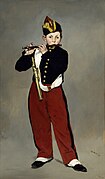







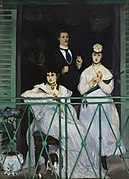






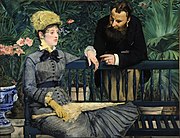
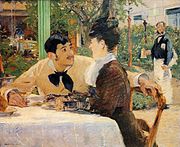




 On this day in 1970 actress Inger Stevens died from a drug related overdose in Hollywood at the age of 35. Born Ingrid Stensland on October 18, 1934 in Stockholm.
On this day in 1970 actress Inger Stevens died from a drug related overdose in Hollywood at the age of 35. Born Ingrid Stensland on October 18, 1934 in Stockholm. 
 On this day in 1983, ballet choreographer George Balanchine died, aged 79, in Manhattan from Creutzfeldt–Jakob disease. Born Georgiy Melitonovich Balanchivadze on January 22, 1904 in Saint Petersburg, Russian Empire. In my opinion, one of the most influential 20th century choreographers. Styled as the father of American ballet, he co-founded the New York City Ballet and remained its Artistic Director for more than 35 years.
On this day in 1983, ballet choreographer George Balanchine died, aged 79, in Manhattan from Creutzfeldt–Jakob disease. Born Georgiy Melitonovich Balanchivadze on January 22, 1904 in Saint Petersburg, Russian Empire. In my opinion, one of the most influential 20th century choreographers. Styled as the father of American ballet, he co-founded the New York City Ballet and remained its Artistic Director for more than 35 years.
 On this day in 1983, blues musician, The Father of Chicago Blues, Muddy Waters died in his sleep from heart failure at his home in Westmont, Illinois at the age of 70. Born McKinley Morganfield on April 4, 1913 in Issaquena County, Mississippi.
On this day in 1983, blues musician, The Father of Chicago Blues, Muddy Waters died in his sleep from heart failure at his home in Westmont, Illinois at the age of 70. Born McKinley Morganfield on April 4, 1913 in Issaquena County, Mississippi. 
 On this day in 1989, director, producer and screenwriter, Sergio Leone died from a heart attack in Rome at the age of 60. Born on 3 January 1929 in Rome. Best known as the director of three legendary, iconic westerns, often referred to as Spaghetti Westerns: A Fistful of Dollars (Per un pugno di dollari) (1964) with Clint Eastwood; For a Few Dollars More (Per qualche dollaro in più) (1965) with Eastwood and Lee Van Cleef; and The Good, the Bad and the Ugly (Il buono, il brutto, il cattivo) (1966) with Eastwood, Van Cleef and Eli Wallach. The film score for all three movies was composed by Ennio Morricone. Leone also directed Once Upon a Time in the West (C’era una volta il West) (1968) with Henry Fonda, Charles Bronson, Jason Robards and Claudia Cardinale; and Once Upon a Time in America (C’era una volta il America) (1984) with Robert De Niro. All five of these movies are among my very favorites and I will stop what I am doing to watch them.
On this day in 1989, director, producer and screenwriter, Sergio Leone died from a heart attack in Rome at the age of 60. Born on 3 January 1929 in Rome. Best known as the director of three legendary, iconic westerns, often referred to as Spaghetti Westerns: A Fistful of Dollars (Per un pugno di dollari) (1964) with Clint Eastwood; For a Few Dollars More (Per qualche dollaro in più) (1965) with Eastwood and Lee Van Cleef; and The Good, the Bad and the Ugly (Il buono, il brutto, il cattivo) (1966) with Eastwood, Van Cleef and Eli Wallach. The film score for all three movies was composed by Ennio Morricone. Leone also directed Once Upon a Time in the West (C’era una volta il West) (1968) with Henry Fonda, Charles Bronson, Jason Robards and Claudia Cardinale; and Once Upon a Time in America (C’era una volta il America) (1984) with Robert De Niro. All five of these movies are among my very favorites and I will stop what I am doing to watch them.
 On this day in 2019, actor Peter Mayhew died
On this day in 2019, actor Peter Mayhew died 


 On this day in 1980, director and producer, Alfred Hitchcock died of renal failure in his Bel Air, Los Angeles, California home at the age of 80. Born Alfred Joseph Hitchcock on 13 August 1899 in Leytonstone, London, England. One of the most influential filmmakers of all time. Hitchcock took suspense and psychological thrills to a whole new level in his films. His stories frequently feature fugitives on the run and beautiful blonde female characters. My favorite Hitchcock movies include: Suspicion (1941) with Cary Grant and Joan Fontaine; Spellbound (1945) with Gregory Peck and Ingrid Bergman; Notorious (1946) with Grant and Bergman; Dial M for Murder (1954) with Ray Milland and Grace Kelly; Rear Window (1954) with Jimmy Stewart and Kelly; To Catch a Thief (1955) with Grant and Kelly; Vertigo (1958) with Stewart and Kim Novak; North by Northwest (1959) with Grant and Eva Marie Saint; and Psycho (1960) with Anthony Perkins and Janet Leigh.
On this day in 1980, director and producer, Alfred Hitchcock died of renal failure in his Bel Air, Los Angeles, California home at the age of 80. Born Alfred Joseph Hitchcock on 13 August 1899 in Leytonstone, London, England. One of the most influential filmmakers of all time. Hitchcock took suspense and psychological thrills to a whole new level in his films. His stories frequently feature fugitives on the run and beautiful blonde female characters. My favorite Hitchcock movies include: Suspicion (1941) with Cary Grant and Joan Fontaine; Spellbound (1945) with Gregory Peck and Ingrid Bergman; Notorious (1946) with Grant and Bergman; Dial M for Murder (1954) with Ray Milland and Grace Kelly; Rear Window (1954) with Jimmy Stewart and Kelly; To Catch a Thief (1955) with Grant and Kelly; Vertigo (1958) with Stewart and Kim Novak; North by Northwest (1959) with Grant and Eva Marie Saint; and Psycho (1960) with Anthony Perkins and Janet Leigh.